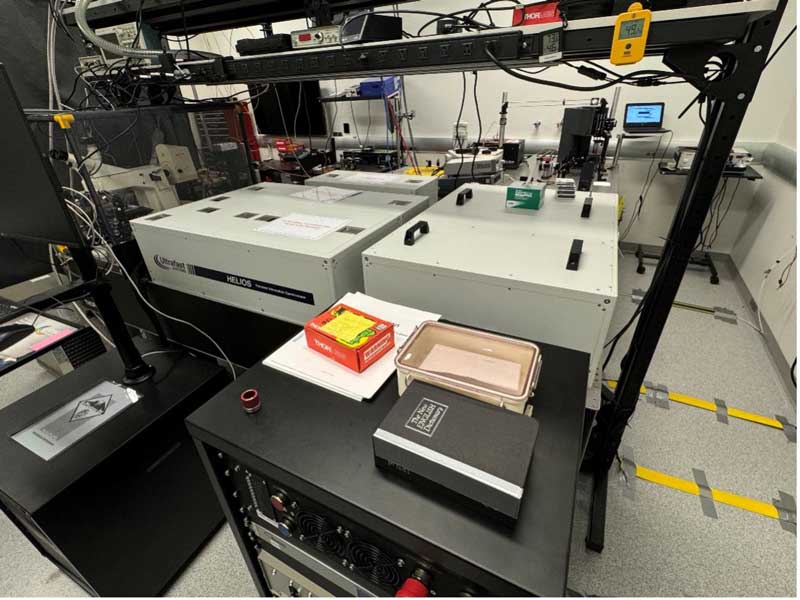Helios Femtosecond Transient Absorption Spectrometer
About the Helios Femtosecond Transient Absorption Spectrometer
The WCU Nanomaterials Laboratory in SECC-252 houses a commercial pump-probe broadband transient absorption spectrometer (Ultrafast Systems Helios Fire) with approximately 290 fs time resolution in a time window of 0 - 8 ns supported by an NSF MRI Grant (Award # 2319135). In this technique, the samples are optically "pumped" using a tunable (240 - 1200 nm) femtosecond laser pulse and "probed" for changes in transmission using a "white-light" laser-generated supercontinuum. The system can be configured to record spectral transients in one of three operating modes: 320 – 650 nm, 450 - 750 nm, or 800 - 1600 nm. Sample holders for cuvettes and thin films are available. The instrument uses a split 6W Ultrafast System Amplified Yb laser (Hyperion) operating at a 1-200 kHz repetition rate to pump an Ultrafast System Apollo Optical Parametric Amplifier (Pump Beam) and to generate the probe continuum beams. The excitation beam can also be diverted to excite samples that are cooled down to 4K in a Montana Instruments Cryostation, and photoluminescence emission spectra can be collected in the 300 – 950 nm or 1000 – 1630 nm range with ~0.05 nm spectral resolution. Time-correlated single photon counting is also available in these ranges using a Si-APD (Excelitas) or a Superconducting Nanowire Single Photon Detection System (Quantum Opus). Time correlation is performed using a Swabian Time Tagger 20 with ~35 ps jitter.

